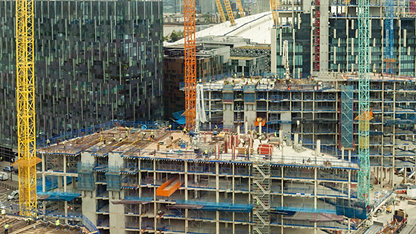The second edition of the International Construction Measurement Standards will have a significant impact on life-cycle cost analysis for constructed assets
The International Construction Measurement Standards second edition (ICMS 2) launched in September and supersedes ICMS 1st edition (ICMS 1). ICMS 1 was launched in July 2017 and published by the ICMS Coalition (ICMSC) – a global group of 47 professional and not-for-profit organisations. The group works together to develop and implement international standards for classifying, defining, measuring, recording, analysing and presenting entire construction costs at a project, regional, state, national and international level.
ICMS 1 were developed to harmonise global cost reporting across markets, regions and subsectors by setting out how to classify, group and report construction project costs in a structured and logical form. They were designed to be used for buildings, civil engineering and infrastructure projects of all sizes and, where applicable, with building information models.
For RICS, ICMS 1 was the first step in creating a seamless, global, pyramidal hierarchy of construction cost classification and offered very high-level global cost benchmarking that connected to granular, local cost measurement.
ICMS 2 is a response to industry feedback from ICMS 1 and resulted in the formation of a second independent standards-setting committee (SSC). This committee included some of the professionals who had developed the first edition, combined with additional experts in life-cycle costing. The SSC worked virtually and met as a group twice: in Dubai and London. Both editions of the international standards have adhered to a transparent, detailed and inclusive development process, and around 300 comments were received and reviewed during the consultation period for ICMS 2.
Life-cycle focus
Life-cycle costs play a key role in the financial management of construction projects. They allow critical decisions to be made relating to longer-term and capital costs that ultimately affect asset performance, longevity, disaster resilience and sustainability. ICMS 2 is a high-level cost model for recording the life-cycle costs of a project and the constructed asset.
“Life cycle costs allow critical decisions to be made relating to capital and longer-term costs that ultimately affect asset performance, longevity, disaster resilience and sustainability.”
In ICMS 1, capital construction costs, associated capital costs, and site acquisition and client’s other costs combine to form a total capital cost. In ICMS 2, these costs are viewed from a whole-life costs (WLC) perspective (see Figure 1). Acquisition costs (AC) appear under the non-construction costs bracket. The life-cycle costs (LCC) are:
• Construction costs (CC): costs incurred by the construction works
• Renewal costs (RC): costs of renewals included in the capital rather than the revenue budget
• Operation costs (OC): costs incurred in the day-to-day operation of a built asset
• Maintenance costs (MC): costs of keeping a built asset in good condition
• End-of-life costs (EC): costs incurred when planning and managing the next step for a building when it is no longer in use.
Those interested in simply presenting the construction costs can use the appropriate template provided with ICMS 2. The broader cost classification in ICMS 2 enhances the abilities of project team members to achieve the following key aims, as defined in ICMS 1:
• Comparative benchmarking: construction and other life-cycle costs to be consistentlyand transparently benchmarked.
• Options appraisal: causes of differences in life-cycle costs between projects to be identified.
• Investment decision-making: informed decisions on the design and location of projects at the best value for money.
• Certainty: project-related data to be used with confidence for financing, investment and decision-making
ICMS2 is to be used by designers, constructors and facilities management experts, with the guidance of cost management professionals (see Figure 2).
Hand in hand
By adopting ICMS and requiring project stakeholders to work to these transparent standards, public- and private-sector project sponsors can set up reliable project budgets, better monitor the financial health of projects and ensure value for money is demonstrated over the life of the assets.
Since the launch of ICMS 1, several key public sector stakeholders – including the European Union and Infrastructure Ontario – have registered their support for ICMS. Earlier this year, in a bid to gain maximum benefit from the UK government’s investment in infrastructure, Highways England adopted and began implementing the standards.
The publication of new RICS standards and guidance, including the forthcoming Cost prediction professional statement, will embody the international standards from ICMS 2, in turn allowing both consistency and integration.
As the construction industry continues to develop, the importance of informed and whole- life project decisions grows. ICMS 2 – the only international standard for classifying and benchmarking costs throughout the life cycle of all types of buildings or infrastructure – provides cost certainty to allow for whole-life success. This is of particular significance to the sponsors with a global footprint of constructed assets, who are mandating that the supply chain either gets up to speed or gets left behind. RICS will continue to monitor feedback to the standards and ensure continued improvement.
- Anil Sawhney FRICS is infrastructure director at RICS mailto:asawhney@rics.org
- Further information: rics.org/icms
- This article originally appeared in the Construction Journal (November-December 2019).

















